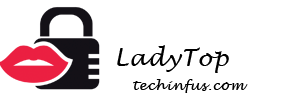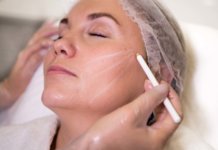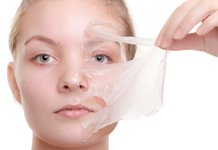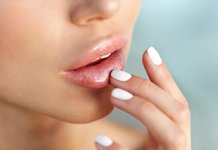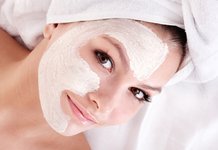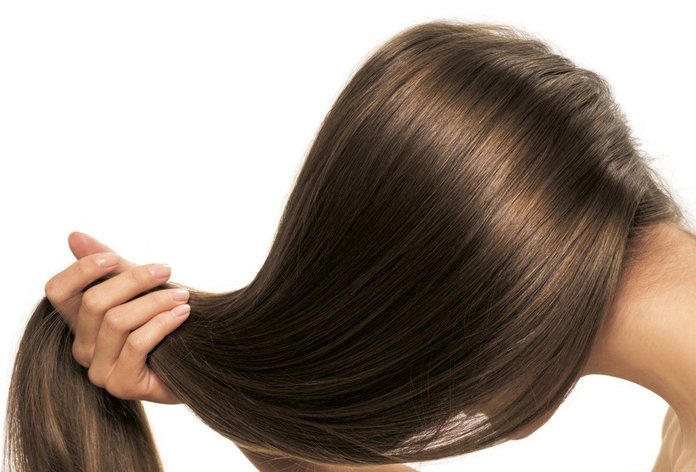
The most popular method of laminating hair at home is the use of a gelatin mask. However, few people know how useful this mask is and in what other variants it can be used. There are various ways to prepare a mask of their gelatin, depending on the desired result and the initial condition of the hair.
The benefits of gelatin for hair
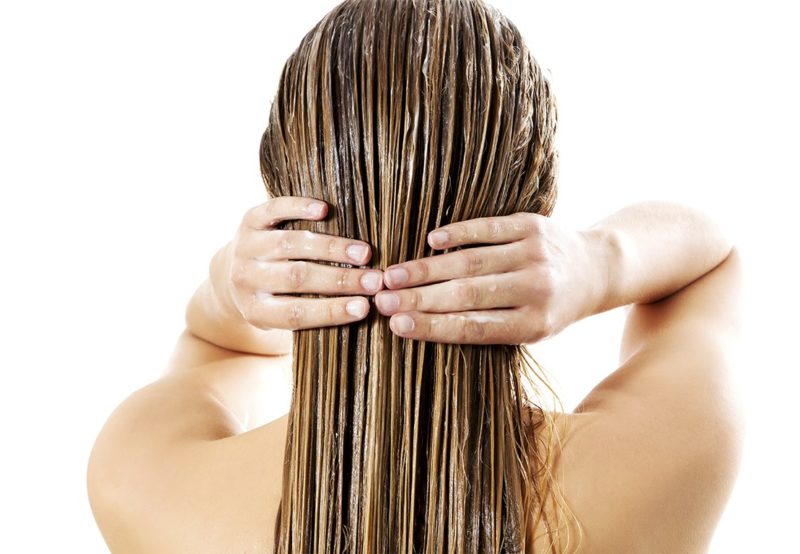
A well-known common purpose of gelatin is in cooking, as a thickener. However, recently, the use of gelatin as an ingredient in various cosmetics has gained increasing popularity.
Gelatin in cosmetic masks gives the hair a gloss and shine effect.
Using masks with gelatin has several advantages over other recipes. They are extremely useful for the health and beauty of curls due to the composition rich in vitamins and active substances. Gelatin also contains a large amount of collagen, which is responsible for the strength and youth of nails, hair and skin.
The main advantages of a gel mask for hair at home:
- The hair structure is restored;
- The effect of laminating strands is created;
- Hair is covered with a protective film;
- Additional volume appears;
- Protects hair from the harmful effects of the environment;
- Curls do not fluff and do not electrify;
- Hair is smoothed and straightened;
- The laying process is facilitated.
Gelatin helps dry hair to retain moisture, while oily hair dries. It is important to compensate for the gelatin content of the masks in order to avoid negative or unpleasant consequences.
Gelatin Hair Mask Recipes
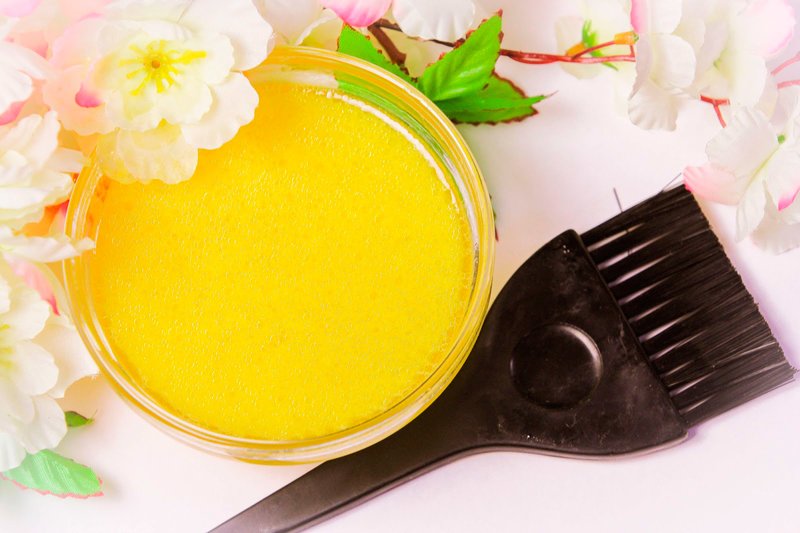
Gelatin is used in the preparation of hair masks in several ways. Depending on the type and condition of the hair, suitable components are selected that can compensate each other and enhance the effect.
Before you start applying the mask, you need to check its effect on the hair. It is enough to apply a little mixture on a small strand, separated near the neck, and, after the specified time, look at the result.
It is important to remember: masks with gelatin should not be applied to hair roots and epidermis.
You can apply gelatin masks only by retreating a few centimeters from the roots. Otherwise, the pores may become clogged, which will cause irritation on the skin, and the hair will look excessively heavy.
Classic gelatin mask recipe

The simplest and most common way to prepare a gelatin mask is a recipe based on gelatin without additional ingredients, with the exception of balm or a special mask.
The classic recipe for a gelatin hair mask is performed in stages:
- Three glasses of water are poured into a pan and boiled;
- We remove the water from the fire, let it cool to be warm;
- Pour a tablespoon of gelatin into a specially prepared container;
- Pour gelatin with three tablespoons of boiled water;
- Mix and cover the mixture with a lid, leave for thirty minutes;
- Wash your hair with shampoo, without the use of a balm or conditioner;
- Add to the gelatin a tablespoon of a purchased hair mask suitable for the type of hair, this is mainly necessary for dry and brittle strands;
- Put on the head and leave for half an hour;
- Rinse hair thoroughly with warm water.
A purchased mask is used for more convenient and easy application of the mixture to the hair. You can not add any third-party ingredients and apply exclusively gelatin, but then the process of washing off the mask may be delayed.
With oils
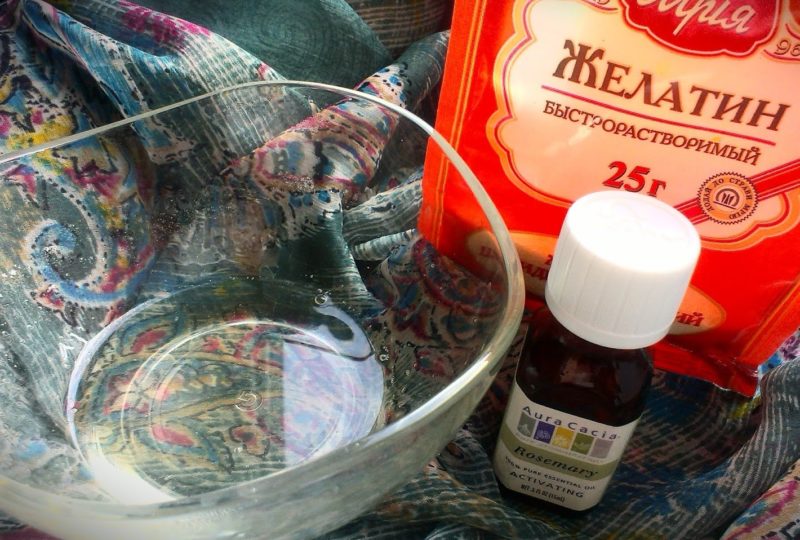
Burdock and castor oil are famous for their miraculous properties that contribute to the rapid growth and strengthening of hair. In combination with gelatin, the effect is really amazing.
To prepare a gelatin hair mask with oils, the following ingredients are used:
- 1 tablespoon of burdock oil;
- equal amount of castor oil;
- gelatin powder.
Gelatin is taken in the amount necessary for dissolving with oils. The ingredients should be mixed and placed in a water bath so that the mixture is a little warm. Then the mask is applied over the entire length of the hair and left for thirty minutes, and then thoroughly washed off. This mask is suitable for all types of hair.
Another version of the mask with gelatin and oils is based on the use of essential oils. A classic gelatin mask is prepared and a few drops of lavender or rose, peach, rosemary are added, blond hair and apricot are also suitable for light hair.
With honey
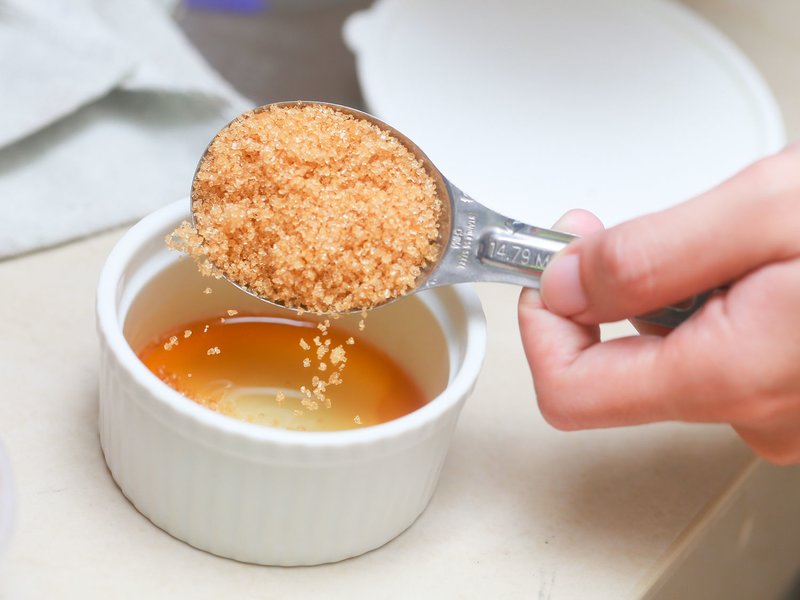
A gelatin mask with honey is the main and most important way of hair nutrition at home. It has a tremendous effect on curls, gives them softness, shine, makes them more obedient.
To prepare the mask, you must:
- Add a spoonful of honey to the gelatin: for short hair and medium length - tea, and for long - a tablespoon;
- The ingredients must be mixed and put in a water bath until the gelatin is completely dissolved;
- The resulting mixture must be slightly cooled;
- Apply the mask to the hair, including the roots, rubbing it with soft circular motions.
- It is better to leave the mixture for half an hour or forty minutes, then rinse with warm water.
For a better and more lasting effect, a few drops of rosemary essential oil and one egg can be added to the gelatin mask with honey yolk. When washing the mixture from the hair, it must be remembered that the locks should remain covered with a thin film that will protect the hair from external factors. Therefore, do not try to remove it or wash it off completely.
With egg
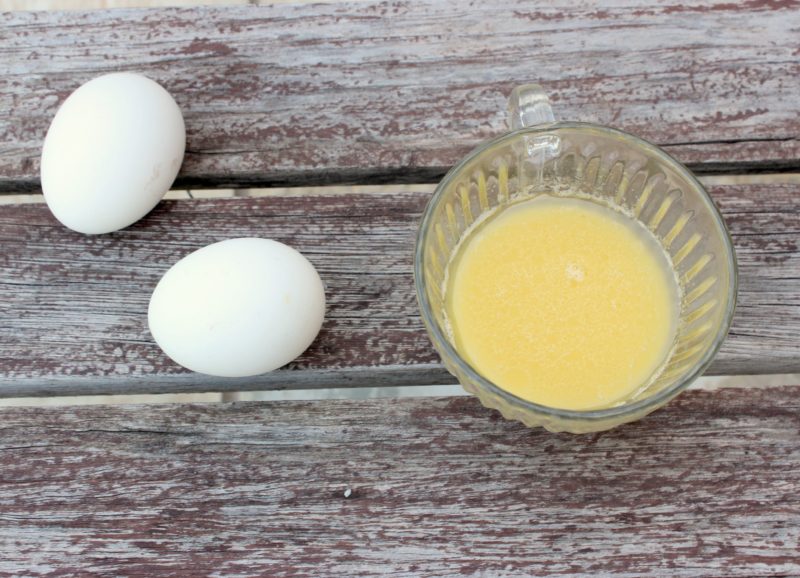
An ideal tool for dry hair is a gelatin mask with an egg. The collagen present in gelatin perfectly fights dryness and brittleness of hair, therefore it is an almost indispensable tool.
First you need to prepare a gelatin mask according to the classic recipe, and then add one egg yolk to it. Important: you can add an egg only to an already prepared mask. The mixture is applied to the hair from the roots to the ends and left for thirty to forty minutes for a better effect.
To give the hair shine and silkiness, it is recommended to add a few drops of various essential oils to the mask. Ideal are oils of roses, calendula and jasmine.
With lemon and camomile

It is very important to make a gelatin hair mask with lemon in order to avoid negative consequences for the roots and scalp. Most folk recipes based on the addition of lemon juice or peel have contraindications:
- Sensitive epidermis;
- Presence of an allergy to citrus fruits;
- Open wounds on the head;
- Avitaminosis.
You should also pay attention to the shade of the hair. Lemon has a brightening effect, because this mask is shown by blondes and those who want to lighten the natural shade a little.
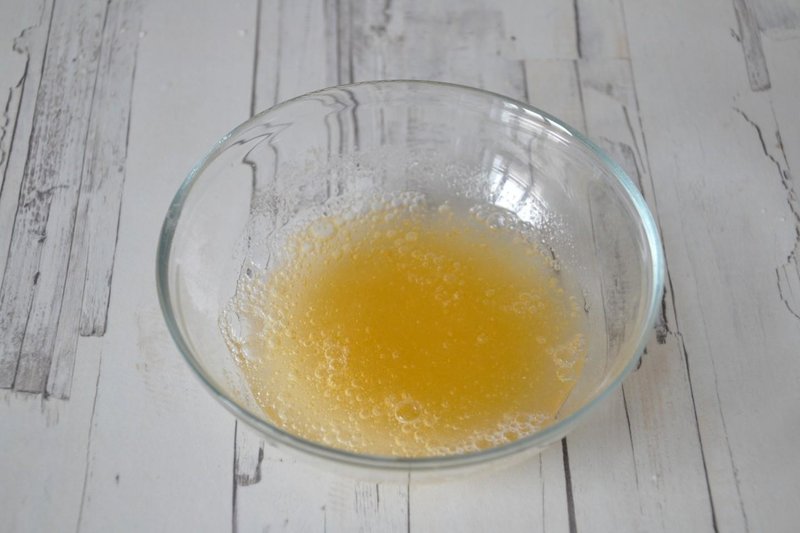
A gelatin mask with lemon is made quite simple:
- Cooking chamomile broth: pour a tablespoon of chamomile flowers with three spoons of boiling water, infuse and filter;
- We dilute gelatin with the obtained chamomile broth;
- Add a tablespoon of lemon juice and mix;
- We place the mixture in a water bath to warm up;
- Cool the mask and apply to the hair for thirty to forty minutes;
- Wash off the mask with warm water.
Chamomile broth as part of the mask is extremely important, as it neutralizes the acidity of the lemon and soothes the scalp. At the same time, chamomile strengthens hair and roots.
Gelatin Hair Lamination

Gelatin hair masks are an indispensable tool for girls with brittle, dull, thin and naughty curls. They help to cope with various problems: split ends, excessive fluffiness, loss. However, their main advantage is the ability to carry out the lamination procedure at home.
Lamination is a predominantly salon procedure for the restoration, densification and alignment of hair. Using lamination, you can achieve the effect of smooth, shiny, obedient and magnificent hair. However, such hair care allows you to better protect them from the negative effects of the environment.
In cases where it is not possible to visit the salon, you can resort to the folk method of straightening hair with gelatin.
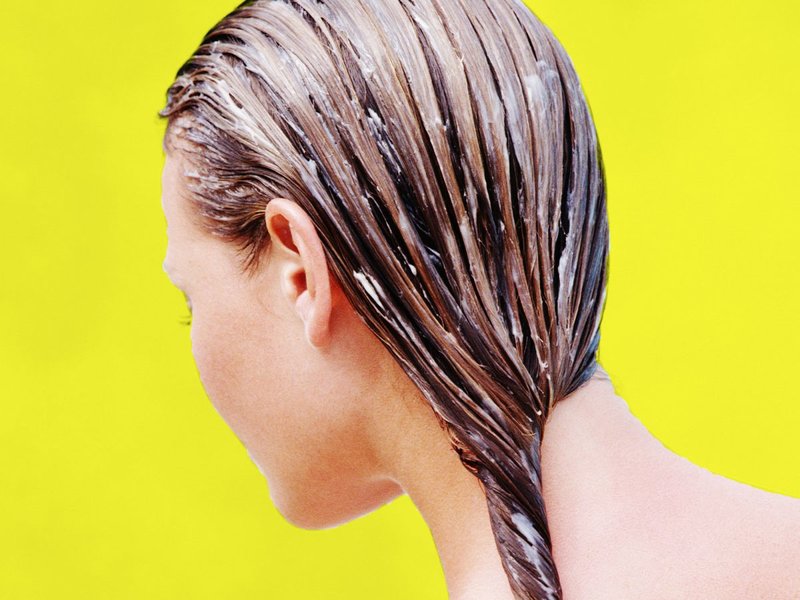
Step-by-step preparation of a gelatin mask for lamination at home:
- Step 1: the foundation. We prepare a classic gelatin mask using gelatin in an amount corresponding to the length of the hair, from one to three tablespoons, and dilute with water. Leave in a water bath for fifteen minutes;
- Step 2: preparation. The head should be pre-washed without the use of a balm, conditioner or serum. The water should be hot enough, after the hair it is enough just to get wet with a towel, but not dry;
- Step 3: preparing the mixture. Mix the finished mask heated in a water bath with a special hair balm or a purchased mask in an amount from half a tablespoon to one and a half, depending on the length of the strands;
- Step 4: application. The mask is applied along the entire length of the hair, slightly departing from the roots - about two to three centimeters. After the head we wrap it with ordinary cling film or a plastic bag and wrap it on top with a warm towel, leaving it for forty-five minutes. Periodically, you can heat the hair through the fabric with a hairdryer;
- Step 5: washing your hair. Wash off the mask with warm water without additional cosmetics. At the same time, you should carefully stretch the strands with your fingers, being careful not to damage the hair.

Despite the many enthusiastic reviews about the gelatin mask as a means for laminating, it has not only advantages, but also disadvantages. The advantages of such a mask include:
- Elimination of external manifestations of hair imperfections;
- The smoothness and silkiness of the strands;
- Creation of a protective film from negative environmental influences;
- Smoothing split ends;
- Alignment of hair structure.
However, one significant drawback of the gelatin mask is the temporary effect and the impossibility of its accumulation. Such a mask can be performed no more than once every two weeks, and the tool itself is not a cure for the problem, but only an external visual adjustment. To get rid of hair problems, careful treatment and hair care, as well as proper nutrition, are recommended.
Contraindications to the use of masks with gelatin
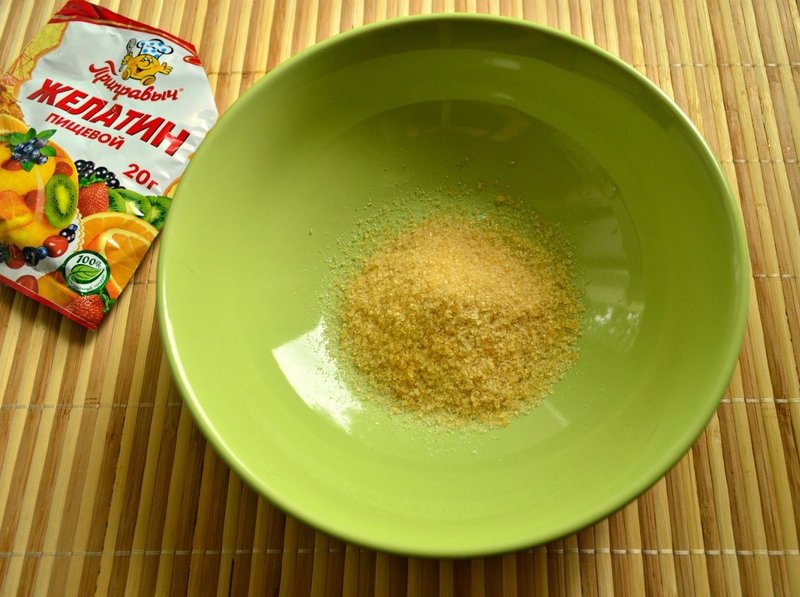
A gelatin mask generally has no contraindications or serious negative consequences. There are a number of tips and directions that are best followed before you start applying these masks. They mainly concern the condition of the scalp and hair, as well as the presence of allergic reactions.
It is not recommended to make gelatin masks in cases:
- Excessive oily hair;
- The presence of wounds, eczema and irritation on the scalp;
- Excessive hair loss or partial baldness;
- Excessive dryness and brittle hair;
- Diseases of the scalp;
- Allergic reactions to the components of the mixture.
The undoubted plus of the gelatin mask is that it can be used during pregnancy, since it does not have any negative effect on the unborn baby. Due to the fact that gelatin is applied to the hair and scalp, such masks do not cause any health problems.
